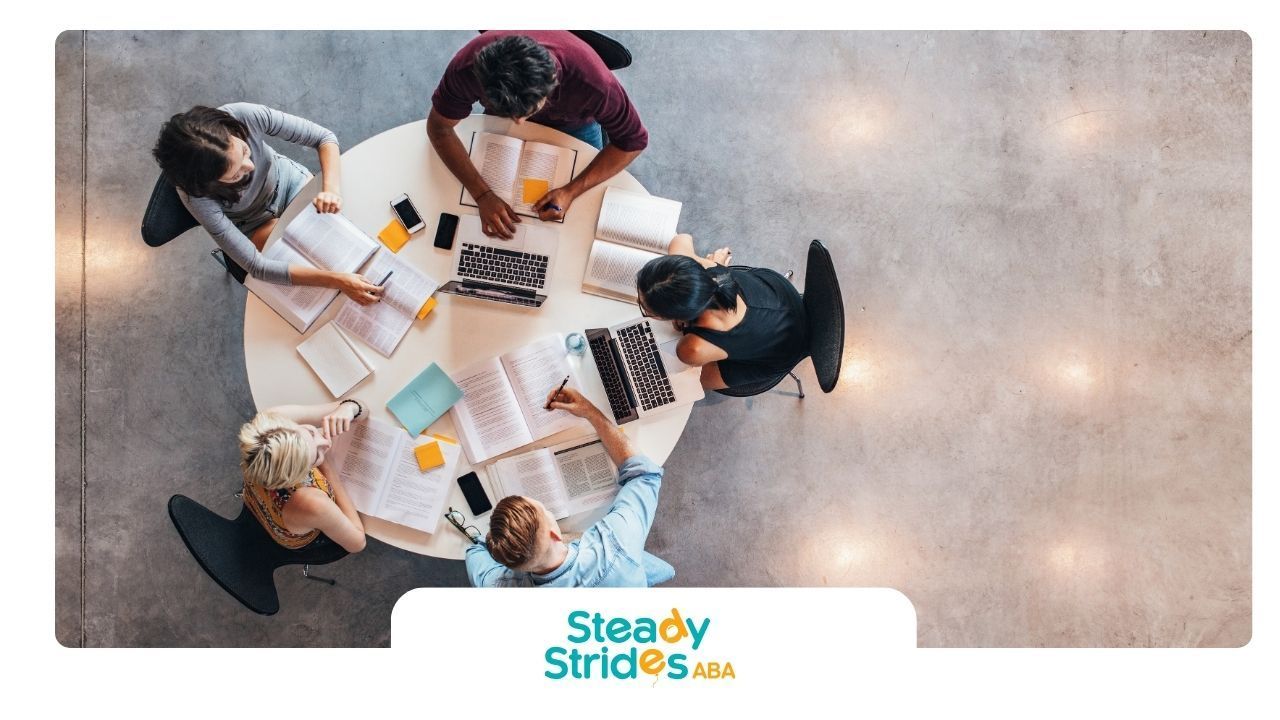Parents, caregivers, and therapists who work with autistic children may have heard the term "autistic stare" and wondered what it means. This article provides a comprehensive guide to understanding the autistic stare, including its causes, how to approach it, and the role ABA therapy plays in supporting children with autism who exhibit this behavior.
What is the Autistic Stare?
The “autistic stare” refers to prolonged eye contact or a distant gaze that some autistic individuals exhibit. It often appears as if the individual is staring intently at something or at nothing in particular, which can sometimes be misinterpreted as disengagement or a lack of social awareness.
However, this behavior has its roots in the sensory and neurological differences of autistic people and can offer insight into how they process the world around them.
Is the Autistic Stare a Common Behavior?
Yes, the autistic stare is common among many individuals with autism. It may occur more frequently in some individuals than others, and for various reasons. Some autistic children and adults may fixate on objects or patterns, while others might use staring as a means of coping with overwhelming sensory information.
Understanding the Causes of the Autistic Stare
1. Sensory Processing Differences
One of the main reasons autistic children exhibit prolonged staring is due to sensory processing issues. The world may feel too stimulating or confusing, and staring at a single object or into space can help them calm down. It serves as a coping mechanism for their brain to filter the overwhelming sensory input.
2. Difficulty with Social Cues
Eye contact, which is often a critical aspect of social interaction, can be challenging for autistic individuals. Some may find it hard to read facial expressions or make sense of non-verbal cues, leading to prolonged staring as they try to process or interpret what’s happening around them.
3. Cognitive Overload
Autistic individuals may experience periods of cognitive overload when faced with too much information. This can lead to a distant gaze, where the child appears "zoned out." Rather than disengagement, this may be their brain's way of processing or reorganizing information.
4. Focus and Hyperfixation
Another explanation is hyperfocus or hyperfixation, where the child becomes intensely absorbed in something of interest. Whether it’s a visual pattern, object, or even a person, this can result in prolonged staring.
5. Self-Regulation
Some autistic children use staring to self-regulate their emotions or energy levels. When feeling anxious or overwhelmed, they may withdraw visually and concentrate on a fixed point as a way to regain control.
How to Approach the Autistic Stare
1. Avoid Misinterpretation
It’s essential not to assume that a child is being defiant or disengaged when they exhibit the autistic stare. Instead, it’s an opportunity to consider what might be overwhelming or captivating their attention.
2. Engage Gently
If you need to engage with the child, do so calmly and without forcing eye contact. Encourage communication through words or gestures rather than expecting the child to break their stare immediately.
3. Use Visual Supports
Visual aids can help autistic children who experience sensory overload. Presenting them with visual cues rather than relying solely on verbal instructions may help reduce the frequency or intensity of the staring behavior.
The Role of ABA Therapy in Addressing the Autistic Stare
Applied Behavior Analysis (ABA) therapy is widely recognized as an effective treatment for various behaviors in children with autism, including repetitive behaviors like the autistic stare. Here’s how ABA therapy helps:
1. Understanding Triggers
ABA therapists work to identify the triggers that cause a child to stare, whether it’s sensory overload, social confusion, or another factor. By understanding the underlying reasons, therapists can develop strategies to help the child manage these triggers more effectively.
2. Teaching Social Skills
For children who struggle with eye contact or social engagement, ABA therapy focuses on improving these areas by teaching them how to read social cues and respond appropriately. This can help minimize prolonged staring and foster better interaction.
3. Sensory Regulation Techniques
ABA therapists often incorporate sensory regulation strategies into the child’s therapy, helping them find alternative ways to self-soothe or cope with overwhelming situations, reducing the need for prolonged staring.
4. Positive Reinforcement
ABA uses positive reinforcement to encourage desired behaviors and reduce behaviors that may interfere with learning or social interaction. Over time, children can learn to manage their sensory needs or social challenges in a way that supports their overall development.
Conclusion
The autistic stare is a common behavior among children with autism, often driven by sensory processing differences, social challenges, or cognitive overload. While it can be misunderstood, understanding its causes and using gentle, supportive strategies can help children manage it more effectively. ABA therapy offers a range of tools to address this behavior, focusing on sensory regulation, social skills, and positive reinforcement.
At Steady Strides, we offer both center-based and in-home ABA therapy services across Texas, helping children with autism and other behavioral challenges reach their full potential. Our dedicated team works closely with families to create personalized therapy plans tailored to each child’s unique needs. If you're looking for expert support in helping your child with autism, reach out to Steady Strides today to learn more about our services.
FAQs
Is the autistic stare a sign of intellectual disability?
No, the autistic stare is not an indication of intellectual disability. It is a behavior linked to sensory processing differences, focus, or social challenges commonly experienced by individuals with autism.
Does the autistic stare mean the child is ignoring me?
No, the autistic stare is not an intentional act of ignoring. It often reflects how the child is processing sensory information or managing social interactions.
Can the autistic stare be harmful?
The autistic stare itself is not harmful, but it may be a sign that the child is overwhelmed. Understanding and addressing the underlying cause can help support the child’s well-being.













